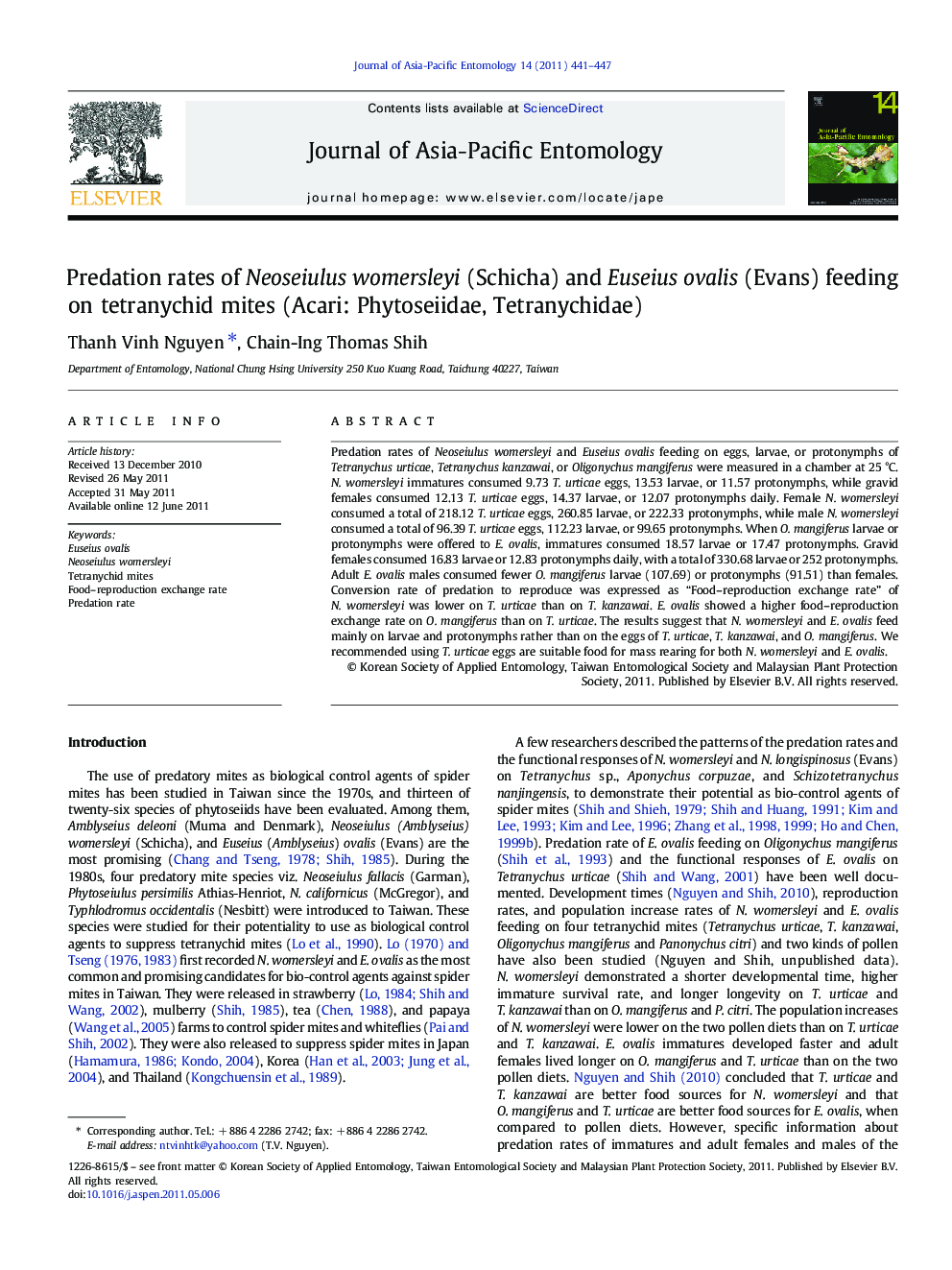| کد مقاله | کد نشریه | سال انتشار | مقاله انگلیسی | نسخه تمام متن |
|---|---|---|---|---|
| 4524565 | 1323582 | 2011 | 7 صفحه PDF | دانلود رایگان |

Predation rates of Neoseiulus womersleyi and Euseius ovalis feeding on eggs, larvae, or protonymphs of Tetranychus urticae, Tetranychus kanzawai, or Oligonychus mangiferus were measured in a chamber at 25 °C. N. womersleyi immatures consumed 9.73 T. urticae eggs, 13.53 larvae, or 11.57 protonymphs, while gravid females consumed 12.13 T. urticae eggs, 14.37 larvae, or 12.07 protonymphs daily. Female N. womersleyi consumed a total of 218.12 T. urticae eggs, 260.85 larvae, or 222.33 protonymphs, while male N. womersleyi consumed a total of 96.39 T. urticae eggs, 112.23 larvae, or 99.65 protonymphs. When O. mangiferus larvae or protonymphs were offered to E. ovalis, immatures consumed 18.57 larvae or 17.47 protonymphs. Gravid females consumed 16.83 larvae or 12.83 protonymphs daily, with a total of 330.68 larvae or 252 protonymphs. Adult E. ovalis males consumed fewer O. mangiferus larvae (107.69) or protonymphs (91.51) than females. Conversion rate of predation to reproduce was expressed as “Food–reproduction exchange rate” of N. womersleyi was lower on T. urticae than on T. kanzawai. E. ovalis showed a higher food–reproduction exchange rate on O. mangiferus than on T. urticae. The results suggest that N. womersleyi and E. ovalis feed mainly on larvae and protonymphs rather than on the eggs of T. urticae, T. kanzawai, and O. mangiferus. We recommended using T. urticae eggs are suitable food for mass rearing for both N. womersleyi and E. ovalis.
Figure optionsDownload as PowerPoint slideHighlights
► We evaluated predation rates of N. womersleyi fed on T. urticae and T. kanzawai.
► E. ovalis fed on O. mangiferus and T. urticae.
► N. womersleyi and E. ovalis feed mainly on larvae, protonymphs than on eggs of prey.
► N. womersleyi and E. ovalis can be mass rearing using larvae and protonymphs of prey.
Journal: Journal of Asia-Pacific Entomology - Volume 14, Issue 4, December 2011, Pages 441–447